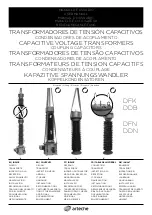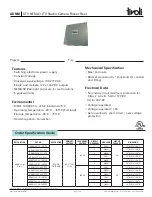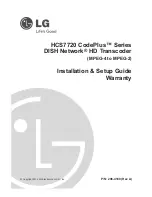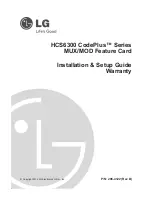
[20]
98MANALIDP10AV Rev. A 8/16/11
Wiring the Transmitter to a Control Loop
When wiring your transmitter, the supply voltage and loop load must be within specified limits.
The supply voltage vs. the output load relationship is shown in Figure 10. Any combination of
supply voltage and loop load resistance in the shaded area can be used. To determine the loop load
resistance (transmitter output load), add the series resistance of each component in the loop,
excluding the transmitter. The power supply must be capable of supplying 22 mA of loop current.
Examples:
1. For a loop load resistance of 860
the supply voltage can be any value from 30 to
42 V dc.
2. For a supply voltage of 24 V dc, the loop load resistance can be any value from zero to
565
To wire one or more transmitters to a power supply, proceed with the following steps.
1. Screw in cover lock (if present) and remove the field terminals compartment cover by
rotating it counterclockwise.
2. Run signal wires (0.50 mm
2
or 20 AWG, typical) through one of the transmitter
conduit connections as shown in Figure 11. Use twisted single pair to protect the
4 to 20mA output from electrical noise. Screened (shielded) cable may be required
in some locations.
NOTE
Do not run transmitter wires in same conduit as main (ac power) wires.
3. If shielded cable is used, earth (ground) the shield at the power supply only. Do not
Summary of Contents for IDP10-A
Page 14: ... 14 98MANALIDP10AV Rev A 8 16 11 ...
Page 16: ... 16 98MANALIDP10AV Rev A 8 16 11 ...
Page 26: ... 26 98MANALIDP10AV Rev A 8 16 11 ...
Page 35: ... 35 98MANALIDP10AV Rev A 8 16 11 ...
Page 37: ... 37 98MANALIDP10AV Rev A 8 16 11 IDP10 A and IDP10 V Calibration ...
Page 40: ... 40 98MANALIDP10AV Rev A 8 16 11 IDP10 A and IDP10 V Configuration ...
















































